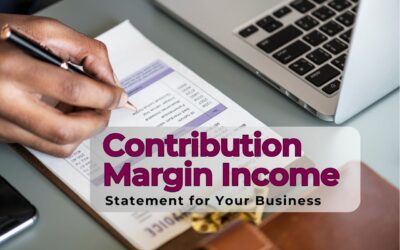Looking to ensure your business sustainability for future years?
For any successful business to thrive it needs strong budgeting practices as its foundation. The absence of proper financial planning can cause even the most promising companies to encounter difficulties in maintaining their business operations.
But here’s the thing…
The majority of business owners overlook the fact that successful budgeting requires more than merely recording income and expenses. This holistic strategy allows businesses to predict difficulties ahead of time while capturing available opportunities and outlining their path towards sustainable growth.
This article outlines effective budgeting techniques which will overhaul your business finances to achieve sustainable long-term success.
What You’ll Discover Inside
- Why Traditional Budgeting Methods Fail Most Businesses
- The 5 Essential Components of an Effective Business Budget
- How to Implement Zero-Based Budgeting for Maximum Control
- Practical Strategies for Cash Flow Management
- Technology Solutions to Streamline Your Budgeting Process
Why Traditional Budgeting Methods Fail Most Businesses
Many businesses treat budgeting as an annual task during which they adjust last year’s figures by adding projected growth percentages. While this budgeting methodology looks practical at first glance it ultimately guarantees failure.
Here’s why:
- This approach overlooks dynamic market shifts because economic conditions and customer preferences change together with competitive landscapes.
- Your previous budget’s inefficiencies continue to exist in the new budget.
- The requirement to adhere to existing spending categories limits your ability to introduce new initiatives.
Successful long-term businesses recognize budgeting as a continuous process that requires constant adjustment. Partnering with local accountants who possess deep knowledge of your market conditions leads to a budget that supports your business needs effectively. Their financial knowledge enables you to make complicated decisions confidently.
The projected deficit for the 2025-26 Australian Federal Budget reaches $42.1 billion which represents 1.5% of GDP. The expanding economic landscape underscores why businesses must implement strong financial planning to counteract growing economic pressures.
The 5 Essential Components of an Effective Business Budget
An effective business budget requires more than setting spending limits. An effective business budget functions as a comprehensive financial plan to guide your decision-making process throughout the year. You should focus on these five essential elements:
1. Revenue Projections
Your business budget should originate from revenue predictions that reflect realistic expectations.
- Historical data
- Current market conditions
- Sales pipeline
- Seasonal fluctuations
Avoid making excessively positive revenue forecasts. Planning becomes more secure when it is built upon conservative revenue estimates.
2. Fixed Costs
Business expenses that stay consistent through various levels of operations include:
- Rent or mortgage payments
- Salaries for permanent staff
- Insurance premiums
- Loan repayments
The Australian Federal Budget plan for 2025-26 introduces cost-of-living relief measures which include electricity rebates and housing support. Businesses should take note of these initiatives to discover ways to optimize their fixed cost structures.
3. Variable Costs
The costs of variable expenses change according to the level of business activity you conduct.
- Raw materials
- Shipping costs
- Commissions
- Utilities
Keep a close eye on the way these expenses change in relation to your revenue growth. Analyzing these relationships between expenses and business activity allows you to plan growth strategies with greater precision.
4. Contingency Fund
Business budgets must include a reserve fund to handle unforeseen expenses and emerging opportunities. Your budget should allocate 5-10% as a contingency fund to handle unexpected expenses.
The Defence Budget for 2025-26 stands at $51.5 billion and includes major investment plans throughout the coming decade. The value of long-term investment strategies proves essential across all sectors.
5. Profit Targets
It is essential for your budget to clearly outline your intended profit objectives. Revenue becomes entirely consumed by expenses when profit targets remain undefined.
How to Implement Zero-Based Budgeting for Maximum Control
Zero-based budgeting (ZBB) demands justification for all expenditures in every new fiscal period. Traditional budgeting relies on last year’s budget as its base while zero-based budgeting begins with a fresh zero slate.
Here’s how to implement it:
- Question every expense: Review each line item by asking “What will happen if we stop funding this expense?” for each line item
- Prioritize spending: Evaluate and order expenses based on their significance to company objectives.
- Consider alternatives: Identify cheaper methods to reach desired results.
- Allocate resources strategically: Allocate financial resources towards areas that deliver the highest return on investment.
Zero-based budgeting demands additional initial effort but reveals substantial cost-saving prospects that traditional budgeting approaches overlook.
Practical Strategies for Cash Flow Management
Having a flawless budget document provides no benefit if you exhaust your available cash. Long-term success depends on effective management of cash flow.
Try these practical strategies:
- Identify when your income arrives and your expenses occur over the course of the whole year.
- Discuss improved payment terms with suppliers to establish better payment schedules.
- Provide small discounts to customers that settle their invoices ahead of schedule.
- Keep enough cash reserves to cover 3-6 months of operating expenses.
- Perform weekly cash flow analysis to maintain accurate financial insights instead of waiting for monthly reports.
Local accountants who understand business cash flow patterns offer valuable improvement insights which many businesses find beneficial. Businesses benefit from their expertise which uncovers hidden bottlenecks and potential opportunities that would otherwise stay unnoticed.
Technology Solutions to Streamline Your Budgeting Process
The modern approach to budgeting should move away from manual spreadsheets and embrace technology-driven methods. Appropriate digital tools can revolutionize your budget creation and adjustment processes.
Consider implementing:
- Cloud-based accounting software: Provides real-time financial visibility
- Automated reporting tools enable the creation of consistent reports that compare planned budgets with actual spending figures.
- Forecasting applications analyze historical data to anticipate future trends
- Financial systems integration allows for seamless connections with various business applications.
Implementing these technology solutions will improve your budgeting process by enhancing efficiency and accuracy while providing valuable insights for decision-making.
Involving Your Team in the Budgeting Process
The budgeting process needs to go beyond just the finance department and top executives. Engaging employees from various business units creates budgets that better reflect real-world conditions while strengthening dedication to financial targets.
Try these strategies:
- Provide training to staff about fundamental financial concepts to demonstrate how budgets affect organizational performance.
- Consult with department heads because they possess the deepest understanding of their department’s requirements.
- Providing employees with relevant financial data promotes trust and increases their engagement.
- Recognize team achievements when they successfully reach or surpass their financial goals.
Employees who understand why budget decisions are made tend to support financial goals.
The Budget Review Cycle: Making Your Budget a Living Document
Many organizations create detailed budgets which they then store away until the following year. Successful businesses use their budgets as dynamic tools which direct their continuous decision-making processes.
Implement this budget review cycle:
- Monthly reviews: Compare actual results to budgeted figures
- Quarterly deep dives: Assess trends and make significant adjustments
- Mid-year recalibration: Revise the budget based on year-to-date performance
- Annual planning: Collect insights from this year to shape next year’s budget plan.
A structured budget review system maintains the usefulness and accuracy of your financial plan year-round.
Wrapping It All Up
Budgeting serves as a strategic tool that helps propel your business towards enduring success beyond its traditional financial function. You can revolutionize your financial planning and management strategies when you apply the techniques that we explained.
Remember that the most successful budgets are:
- Realistic yet ambitious
- Flexible and adaptable
- Aligned with strategic goals
- Regularly reviewed and updated
- Understood and supported throughout the organization
Seek professional assistance from qualified financial advisors and local accountants who can provide customized advice tailored to your unique situation. Professional expertise plays a crucial role in creating an effective budget customized to meet your business needs.
Effective budgeting techniques give you the power to manage financial challenges and capture opportunities while establishing a long-lasting business.











